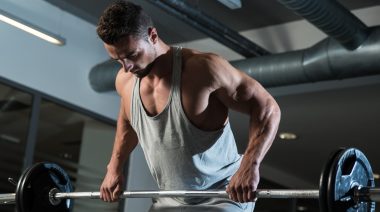If you were to challenge someone to get into shape without stepping into a gym, they’d be confused. It’s as if some people still believe you can only build muscle, get stronger, or improve conditioning by lifting weights or using machines. That’s just not true.
Bodyweight training is convenient, can be done anywhere, and can be easily modified to fit nearly any fitness goal. Let’s stop ignoring bodyweight workouts and formulate an effective plan for any goal with modifications, intensity techniques, and detailed explanations of execution.
The Best Bodyweight Workouts
Bodyweight Workout for More Muscle
To build muscle, you need to overload the muscle with the right amount of stress so it will respond by getting bigger and stronger. Utilizing bodyweight exercises to accomplish this will take some creativity, but it’s absolutely possible.
One of the few “compromises” made with bodyweight training is that it can be more difficult to directly target certain muscle groups (particularly smaller muscles like the arms and shoulders). Fortunately, these muscles are sufficiently worked by focusing on larger exercises combined with specially adjusted movement to emphasize the smaller muscles.
Focus on modifying certain bodyweight movements to make them more challenging. Using strict form and slowing down each movement so you feel every inch of the motion is essential to reap the most benefit.
The Bodyweight Bodybuilding Workout
The following workout can be done three times per week on non-consecutive days. For example, you can train on Monday, Wednesday, and Friday or Tuesday, Thursday, and Saturday. You can also simply replace one or two of your traditional gym workouts with one or two bodyweight workouts.
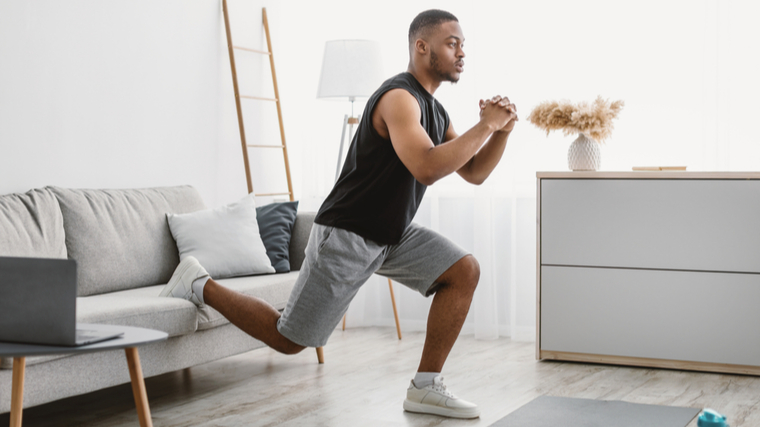
Start slow and deliberate, and perfect your form on each exercise before making them more challenging.
Bulgarian Split Squat
- How to Do It: Place on foot behind you onto a bench or chair. Lower your body straight down until your rear knee is almost touching the floor. To make it more challenging, lower down all the way, drive up halfway, then lower down all the way again, and finally press all the way up. That is one rep.
- Sets and Reps: 3 x 10-15
- Rest Time: 30 seconds between sides.
Feet-Elevated Push-Up
- How to Do It: Begin in a push-up position with your hands and toes on the ground. Place your feet onto a bench, chair, or step behind you. Keeping your body straight, slowly lower your chest to the floor, pause at the bottom, and then press powerfully to rise up. To make it tougher, either have a partner place a weight plate on your back or place a band around your upper back while grasping each end with your hands on the floor.
- Sets and Reps: 3 x 10-15
- Rest Time: 60 seconds between sets.
Inverted Row
- How to Do It: Lie on the floor facing up under a stationary bar set around hip height (or a sturdy table). Grasp the bar with an overhand grip a little wider than shoulder-width. Keep your body straight and your heels on the floor. Pull your chest to the bar and then return to the bottom position without resting on the floor. For more of a challenge, place your heels on a bench or chair to shift leverage and increase the load on your upper body.
- Sets and Reps: 3 x 10-15
- Rest Time: 60 seconds between sets.
Lying Leg Curl
- How to Do It: Lie on the floor with your heels on an exercise ball or a pair of furniture sliders. A towel on a hardwood or tile floor can also work. Put your arms out to your sides for added stability. Curl your lower legs toward you by pulling with your heels. Bring your hips up and keep a straight line from your upper back to your knees. Contract your hamstrings at the top position and slowly lower back down.
- Sets and Reps: 3 x 10-15
- Rest Time: 60 seconds between sets.
Triangle Push-Up
- How to Do It: Begin in a full push-up position with your hands and toes on the ground with your hands a bit inside of shoulder-width. With a rigid body, lower yourself down to the floor and then press up slowly and under control. For more of a challenge, place your feet on an elevated box or bench to shift more bodyweight towards your upper body.
- Sets and Reps: 3 x 10-15
- Rest Time: 30 seconds between sets.
Inverted Biceps Curl
- How to Do It: Lie face up on the floor under a sturdy hip-height bar as if you were to perform an inverted row. Grasp the bar with an underhand grip about shoulder-width apart. Pull your body up and focus on bending mainly at your elbows, allowing your arms to perform a classic curling motion. Squeeze at the top and then return towards the floor.
- Sets and Reps: 3 x 10-15
- Rest Time: 30 seconds between sets.
Bodyweight Workout for Strength
Strength can take many forms and bodyweight training is surprisingly effective for developing power. What’s the difference between pure strength and power? Both cultivate strength. However, power is your ability to move a specific load quickly. Think of Olympic weightlifting or throwing a heavy medicine ball.
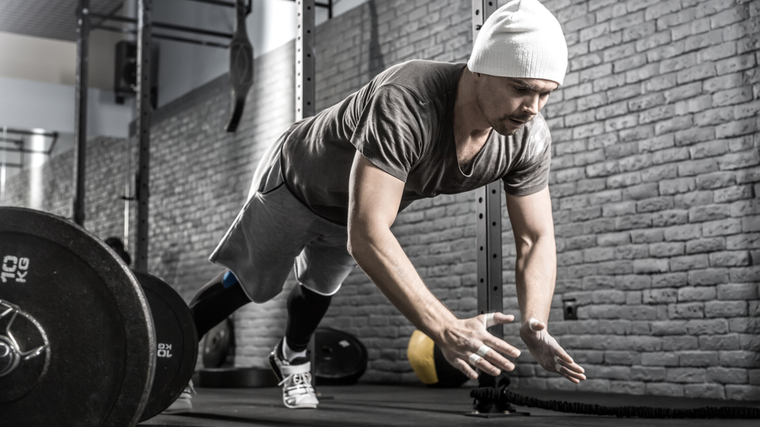
Manipulating your bodyweight is a natural and effective way to build more strength and power, either on its own or to enhance your current workouts. (1)(2)
The Strong and Powerful Bodyweight Workout
Try the following workout to facilitate more strength. You can also insert it into any traditional training program as an additional workout to add a different element or to get you out of your comfort zone with something new. Execute the exercises with proper technique and controlled explosive force.
Plyo Push-Up
- How to Do It: Assume the traditional push-up position. Lower yourself to the floor in a slow and controlled manner then rapidly reverse direction applying as much power as possible. You should generate enough power to launch your hands off the floor.
- Sets and Reps: 3 x 5
- Rest Time: 60 seconds between sets.
Jump Squat
- How to Do It: Create a solid base by spreading your feet wider than your shoulders. Bend down into a squat position forming an approximate 90-degree angle at your knees. Utilizing your entire body to generate power, jump as high as you can straight up. Cushion your landing by bending legs. Take the time to set up your stance again before the next rep.
- Sets and Reps: 3 x 10
- Rest Time: 60 seconds between sets.
Negative Pull-Up
- How to Do It: Stand under a pull-up bar on a box or bench. Grab the bar with an overhand grip. Jump up to begin with your chin over the bar and your feet off the box or bench. Very slowly lower your body until your arms are fully extended. Get your feet back on the bench and jump up to the starting position for the next rep.
- Sets and Reps: 3 x 5
- Rest Time: 60 seconds between sets.
Depth Jump
- How to Do It: Stand on a box, bench, or step no higher than 18 inches. Step off the edge — do not jump off. Cushion your landing by bending your knees and immediately reverse direction to jump straight up. That is one rep. Walk back on top of the box or step and repeat for reps.
- Sets and Reps: 3 x 5-10
- Rest Time: 60 seconds between sets.
Bodyweight Workout for Conditioning
While bodyweight training can be programmed for many different goals, it’s most commonly associated with circuit-style workouts to build endurance and conditioning. (3)(4)
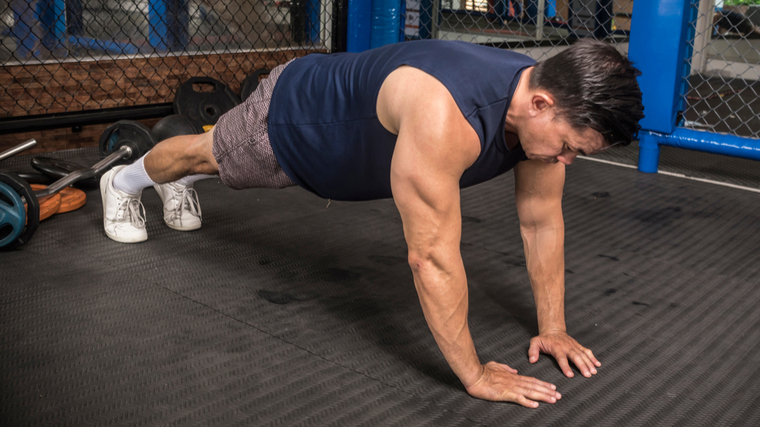
With anytime, anywhere convenience and the overall simplicity of programming, conditioning workouts using your own body are a perfect combination. Not needing to rotate between different machines or equipment makes bodyweight exercises an ideal choice for circuit workouts.
The Bodyweight Circuit
This workout is done as a circuit — moving from one exercise immediately to the next and the next, for several rounds. However, one of the most important factors is to avoid rushing through the exercises.
Approach each exercise deliberately while using proper form and technique. Once your form starts to deteriorate, terminate the set and move on to the next exercise.
- Push-Up: Perform a full push-up with your hands and toes on the ground with your hands outside of shoulder-width. Keep a straight line throughout your body. Use a full range of motion from the ground to lockout.
- Squat: With your feet slightly wider than shoulder-width, squat as low as possible before standing fully upright. Keep your feet flat on the ground throughout each rep.
- Crunch: Lie on the ground facing up with your legs bent and your feet flat. Contract your abs to raise your shoulders slightly off the ground. Keep your tailbone and lower back in contact with the ground.
- Walking Lunge: Take a long step forward, descend into a lunge until your rear knee touches the ground. Stand upright while bringing your rear foot forwards. Alternate sides when stepping forward.
- Triangle Push-Up: Set your hands inside shoulder-width. Perform a basic push-up keeping only your toes and hands on the ground. Lower to the ground and extend to full lockout.
- Jump Squat: Stand with your feet more than shoulder-width apart. Squat until your hips are in line with your knees. Use your arms and entire body to explosively stand up, jumping straight into the air. Bend your legs upon landing and stand upright before beginning the next rep.
- Plank: Begin in a modified push-up position with your toes, elbows, and forearms on the ground. Maintain a rigid body. Tightly contract your abs and glutes for 10 to 15 seconds per set.
How to Do It: Execute proper form for each exercise. Focus on technique, not speed, during each individual movement.
Sets and Reps: 3 to 5 rounds of 10 to 15 reps per exercise.
Rest Time: No rest between exercises, three minutes rest after each round.
Bodyweight Workout for Beginners
Bodyweight training is one of the most fundamental forms of exercise. It’s not only a convenient way of training; it also enables an individual to harness and control their own body and to develop true total-body strength and coordination. It’s one thing to deadlift a significant load but quite another to perform a set of 20 pull-ups.
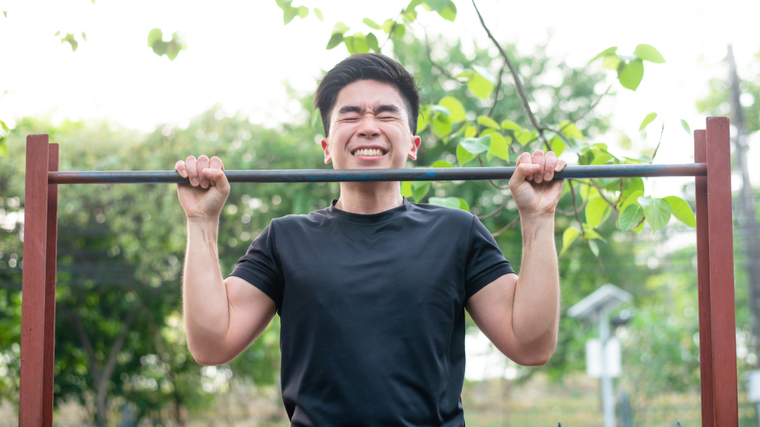
If you’re a more traditional barbell-focused lifter and want to improve your overall performance, bodyweight training will only enhance your capabilities.
The Beginner’s Bodyweight Workout
This workout is designed to develop the fundamentals of bodyweight training specifically. These foundational movements will serve as a backbone for all other exercises and stimulate an improved neuromuscular connection with each muscle group. This will only help to your advantage in performing different exercises, with bodyweight or free weights.
- Push-Up: Perform a full push-up with your hands and toes on the ground with your hands outside of shoulder width. Keep a straight line throughout your body. Use a full range of motion from the ground to lockout.
- Inverted Row: Set a sturdy bar at hip height and lie on the ground beneath it. Grab the bar with an overhand grip. Maintain a straight line from your shoulders to your toes. Pull your chest towards the bar and lower to full extension.
- Negative Pull-Up: Stand under a pull-up bar on a box or bench. Grab the bar with an overhand grip. Jump up to begin with your chin over the bar and your feet off the box or bench. Slowly lower your body until your arms are fully extended. Get your feet back on the bench and jump up to the starting position for the next rep.
- Triangle Push-Up: Set your hands inside shoulder-width. Perform a basic push-up keeping only your toes and hands on the ground. Lower to the ground and extend to full lockout.
- Squat: With your feet slightly wider than shoulder-width, squat as low as possible before standing fully upright. Keep your feet flat on the ground throughout each rep.
- Lunge: Begin with your feet together. Step forward with one foot. Keep your torso upright while lowering your body until your rear knee touches the ground. Stand upright and return to the starting position. Complete all reps on one side before switching legs.
- Crunch: Lie on the ground facing up with your legs bent and feet flat. Contract your abs to raise your shoulders slightly off the ground. Keep your tailbone and lower back in contact with the ground.
How to Do It: Perform each exercise with proper form. Focus on perfecting technique before increasing reps. Be sure to perform each movement with a slow and controlled cadence.
Sets and Reps: 3 x 10-15 for each exercise.
Rest Time: 60 seconds between sets.
How to Warm-Up
Just because you’re not “lifting weights” doesn’t mean you can skip a proper warm-up. Before each bodyweight workout, perform a simple warm-up to increase your core temperature and improve blood flow.
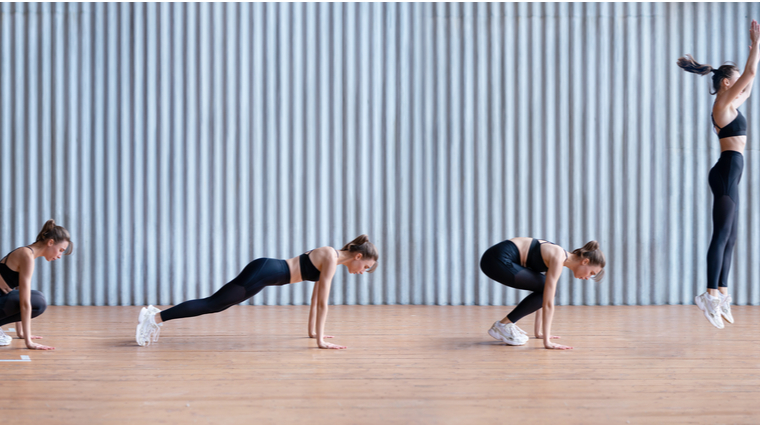
This gets your entire body ready for the work ahead and helps to prevent injuries. Do each warm-up exercise separately and without going to muscular failure.
The Full-Body Bodyweight Warm-Up
- Jumping Jack: Begin standing with your feet together and arms down at your sides. Slightly jump up and land with your feet spread apart while raising both arms sideways above your head. Jump up again and land in the starting position. That series in one rep. Perform two sets of 20 reps.
- Burpee: Begin standing upright. Squat down and place your hands on the ground. Jump your feet back and land on your toes in a push-up position. Perform one push-up. Jump your feet back in near your hands. Jump straight into the air, bending your knees upon landing. That’s one total rep. Perform two sets of 10 reps.
- Lunge: Begin with your feet together. Step forward with one foot. Keep your torso upright while lowering your body until your rear knee touches the ground. Stand upright and return to the starting position. Complete all reps on one side before switching legs. Perform two sets of 10 reps on each leg.
A Return to Bodyweight Training
With the popularity of bodyweight training increasing and its benefits becoming more and more recognized, it has proven to be a significant training method for anyone, no matter their goal.
Most lifters believe they need a fully equipped gym to build muscle, get stronger, or improve conditioning, but the right bodyweight workout can deliver results and add a different element to any fitness workouts.
References
- Calatayud J, Borreani S, Colado JC, Martin F, Tella V, Andersen LL. Bench press and push-up at comparable levels of muscle activity results in similar strength gains. J Strength Cond Res. 2015 Jan;29(1):246-53. doi: 10.1519/JSC.0000000000000589. PMID: 24983847.
- Tillaar RVD. Comparison of Kinematics and Muscle Activation between Push-up and Bench Press. Sports Med Int Open. 2019;3(3):E74-E81. Published 2019 Sep 5. doi:10.1055/a-1001-2526
- Archila LR, Bostad W, Joyner MJ, Gibala MJ. Simple Bodyweight Training Improves Cardiorespiratory Fitness with Minimal Time Commitment: A Contemporary Application of the 5BX Approach. Int J Exerc Sci. 2021 Apr 1;14(3):93-100. PMID: 34055156; PMCID: PMC8136567.
- Martins FM, de Paula Souza A, Nunes PRP, Michelin MA, Murta EFC, Resende EAMR, de Oliveira EP, Orsatti FL. High-intensity body weight training is comparable to combined training in changes in muscle mass, physical performance, inflammatory markers and metabolic health in postmenopausal women at high risk for type 2 diabetes mellitus: A randomized controlled clinical trial. Exp Gerontol. 2018 Jul 1;107:108-115. doi: 10.1016/j.exger.2018.02.016. Epub 2018 Feb 19. PMID: 29471132.
Featured Image: DmitryStock / Shutterstock




